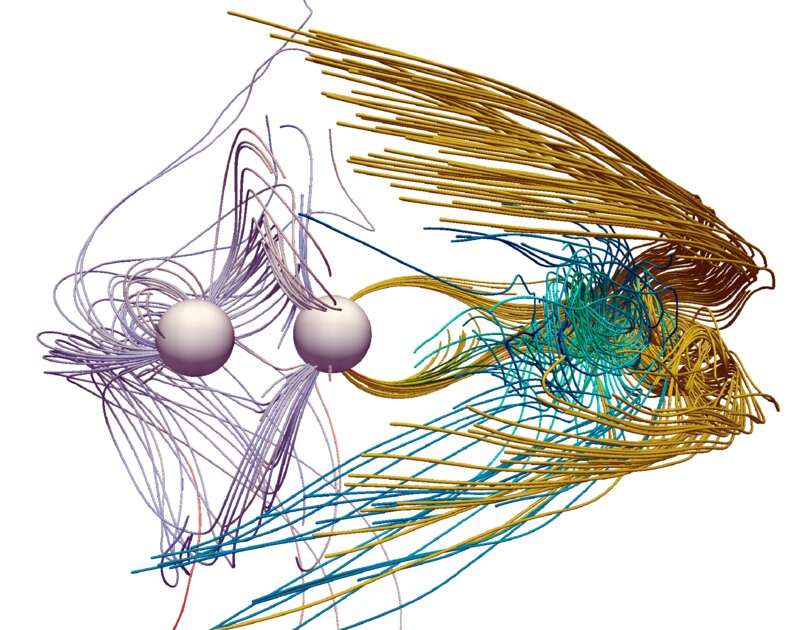June 27, 2023 report
This article has been reviewed according to Science X's editorial process and policies. Editors have highlighted the following attributes while ensuring the content's credibility:
fact-checked
peer-reviewed publication
trusted source
proofread
A new theory to explain fast radio bursts

A pair of astrophysicists, one with Princeton University, the other the University of Maryland, has developed a new theory to explain fast radio bursts (FRBs). In their paper published in the journal Physical Review Letters, Elias Most and Alexander Philippov, describe their theory and how it fits in with other theories surrounding FRBs.
The first FRB was recorded in 2007, and since that time, more than 600 have been recorded, all by chance. This is because astronomers do not know their source. What they do know is that they are strong, short-lived bursts of radio waves, and that at least so far, all of them originated from very far away.
One of the leading theories developed to explain FRBs is that they are caused by magnetars, a type of slowly rotating neutron star. The theory suggests that their super-strong magnetic energy bursts are behind FRBs. Unfortunately, there has been no way to prove whether the theory is correct. In this new effort, the researchers suggest another possibility—that they occur shortly before two neutron stars merge.
Prior research has suggested that neutron star mergers tend to have electromagnetic counterparts—one such event was actually recorded back in 2017. Most and Philippov suggest that as neutron stars approach one another, their rotation rate increases. That speeds up electrons over their poles, resulting in the creation of an electron-positron plasma field. Then, as the stars grow closer, the electromagnetic energy escapes the magnetic fields from both stars in an orbital plane just before they collide. This, they suggest, results in the release of a massive burst of energy, which is detected by instruments on Earth as fast bursts of radio waves.
The researchers also suggest that such a burst would be similar to radio waves emitted by magnetars. They note the major difference with magnetars would be that the emissions occur after the events that lead to their creation, whereas with a neutron star merger, the action happens just prior. They conclude that new technology, such as the deployment of the Square Kilometer Array in 2027, should provide a means of confirming which if either of the two theories is correct.
More information: Elias R. Most et al, Reconnection-Powered Fast Radio Transients from Coalescing Neutron Star Binaries, Physical Review Letters (2023). DOI: 10.1103/PhysRevLett.130.245201. On arXiv: DOI: 10.48550/arxiv.2207.14435
Featured in Physics: physics.aps.org/articles/v16/s88
Journal information: Physical Review Letters , arXiv
© 2023 Science X Network





















